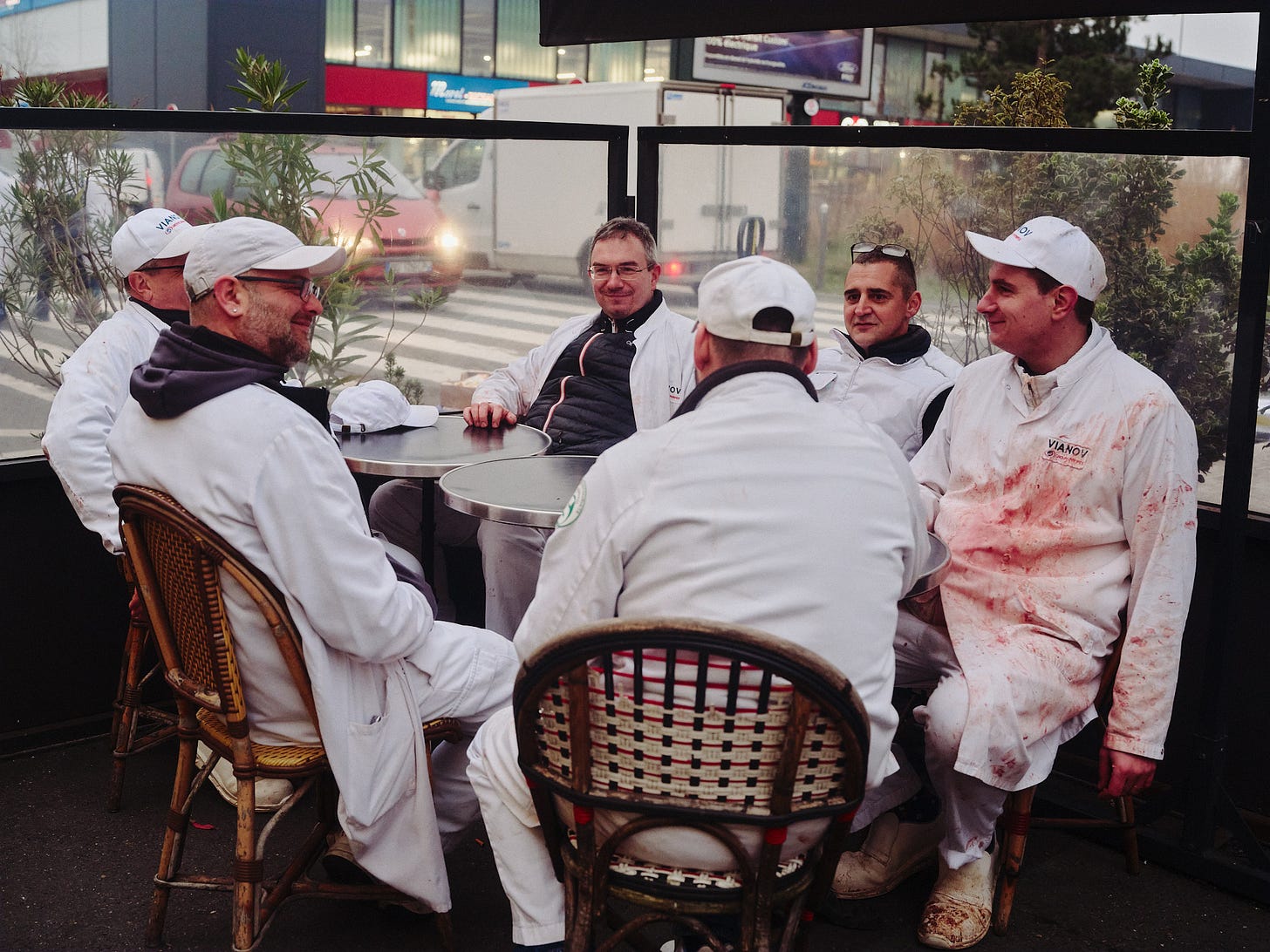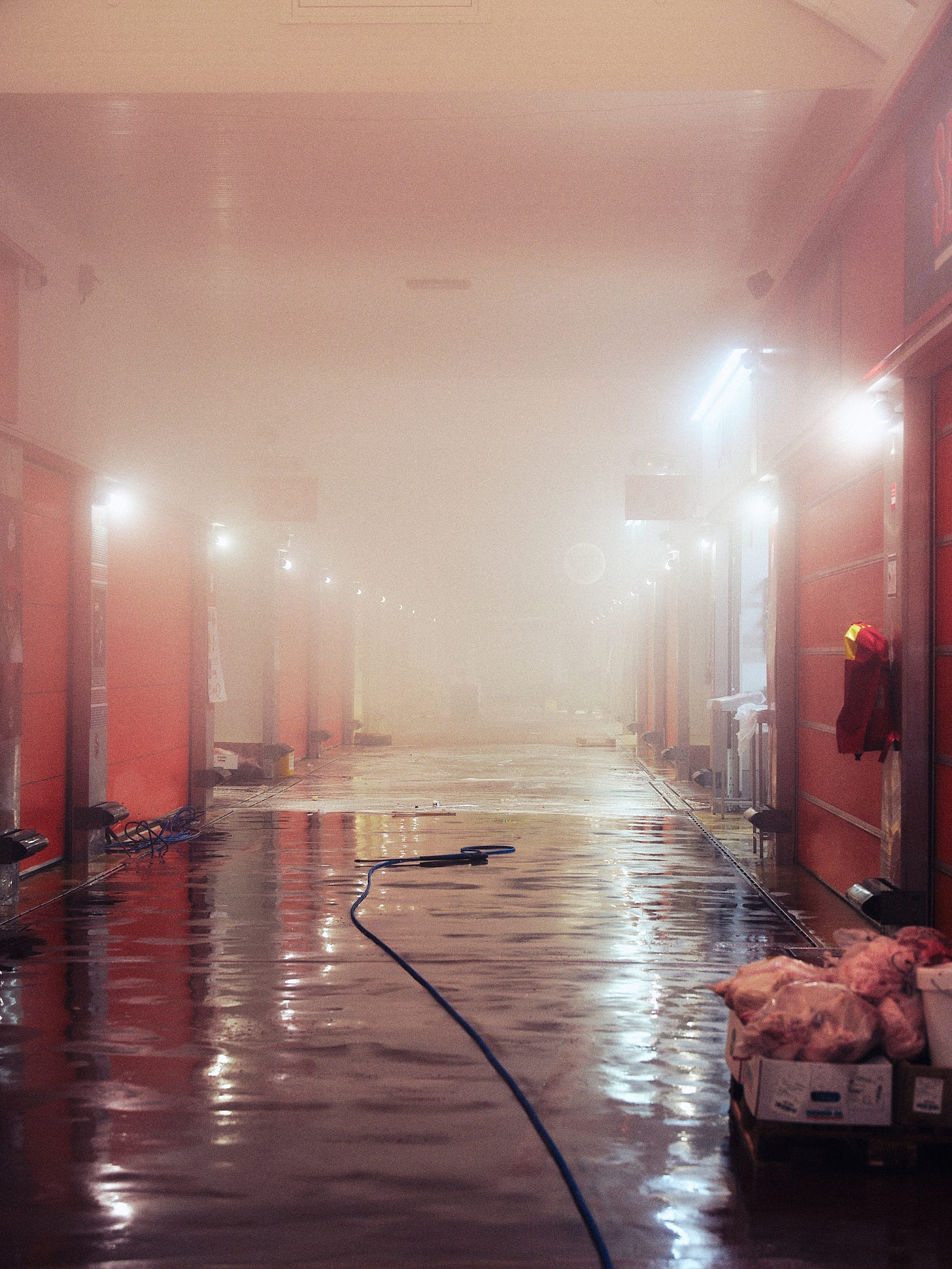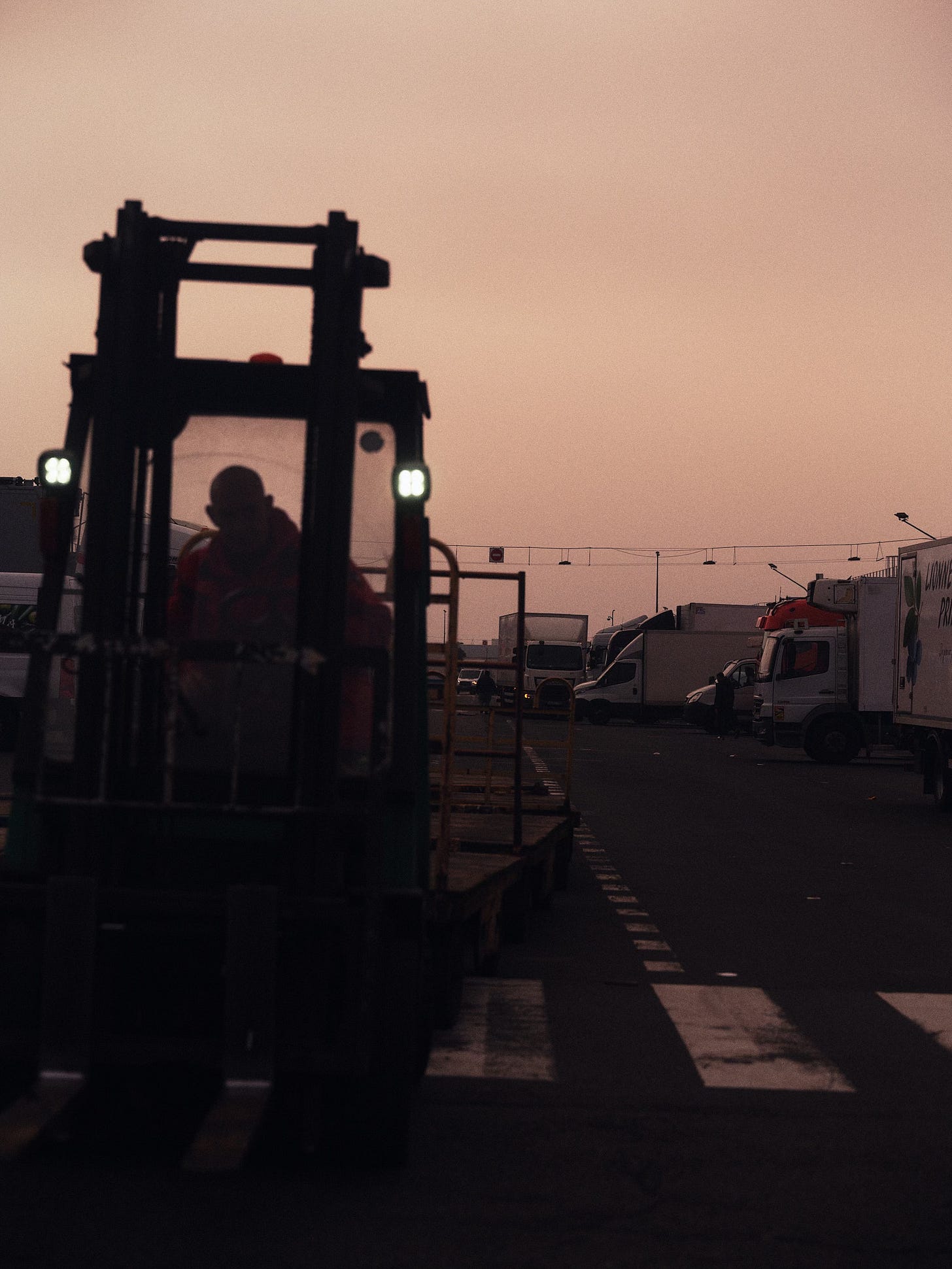Rungis: The Market and the City
A day at Europe's largest fresh food market. Words by Justinien Tribillon. Photographs by Wendy Huynh.
Good morning and welcome to Vittles. For the next two weeks, we will be sending out individual articles from our supplement Vittles Paris. To read the rest of the series, please click below:
The Vittles Alternative Guide to Paris
The Last Critic in Paris, by Vadim Poulet
The Story of Soupe Phnom Penh, by Wendy Huynh
‘Welfare is a right, not a privilege’, by Jack Franco
Pourquoi pas?, by Jonathan NunnArticles from Vittles Paris are paywalled — to view them, you can subscribe to Vittles for £7/month or £59/year. Your subscriptions help pay all our writers, photographers and illustrators at a fair rate.
The international market of Rungis, the largest fresh food market in Europe, is located close to Orly airport, south of Paris — about an hour’s drive from the city centre during the day, but just 20 minutes in the dead of night when those who feed Paris are already awake and hard at work. On your way there you will notice that nearly all early-morning encounters are connected to food: bakeries are lit up, with the smell of fresh bread already floating in the air, while supermarket employees wait for duty managers outside their shops’ closed shutters. Three hours before sunrise, some restaurants in the suburbs are already busy serving food to patrons; when I visit in late March, we are in the last days of Ramadan, and Muslim workers who are at the end of their shifts, or about to start them, enjoy suhur before fasting begins at 5.33am.
“To everyday Parisians, Rungis is a distant Cockaigne, a land of plenty that few have experienced firsthand”
At 4am in Rungis, it feels like the entire city is awake and roaring. And it is a city – around 13,000 people work here across 234 hectares, getting on for twice the size of London’s Hyde Park. Not only is it the size of a small city, it is hustling like one: across a series of hangars that stretch as far as the eye can see, there are hundreds of lorries manoeuvring, forklift trucks going in all directions, cries and boisterous laughs, the odd trader on his plastic chair drinking instant coffee before hitting the road, with the entire uncanny landscape illuminated by floodlights. So much of what Paris eats emanates from these hangars: the bavette sold by your local butcher, the fish grilled in a Michelin-starred restaurant, the piece of Comté cheese you’ll purchase at your favourite cheesemongers.
My guide today is Marc-Antoine Surand, the owner of Bistro Quedubon in the 19e arrondissement of Paris, and a Rungis veteran. He was introduced to the market in 2018 by Gilles Bénard, the previous owner of the restaurant, and has continued the tradition of coming to Rungis every Tuesday morning to source the produce that chef Ollie Clarke will work with for the week. I am not alone in shadowing Surand today: chef Justine Audoin one of the rising stars of the Parisian culinary scene, formerly at Ajar, and about to open her own as-yet-unnamed restaurant as co-chef with Marie-Victorine Manoa this September – is also here today for her initiation to the market. As we walk around, Surand debunks a myth: “There are not many restaurateurs who come to Rungis themselves to source their produce,” he tells me. There is often a lack of compatibility between the lives of chefs, the schedules of restaurants that open six or seven days a week, and the remoteness and operating hours of Rungis. Surand usually arrives just before 5am, and by 7.15am he is back on the road, in order to reach Quedubon by 8am). ‘You can’t do a dinner shift the day before, then be in Rungis at 4am before moving on for another full day of cooking’, explains Audoin. Surand agrees, and confesses that he almost dropped the tradition after he fell asleep at the wheel on his way back from the market a couple of years ago.
To everyday Parisians, Rungis is a distant Cockaigne, a land of plenty that few have experienced firsthand. This is a business-to-business market – you need a professional membership to sell and buy – and even though the extension of line 14 of the métro in 2024 made Rungis much more accessible, there isn’t much reason to come here to browse produce you cannot purchase anyway. Most French people will only have a mediated knowledge of Rungis, often through TV, as journalists flock to it around Christmas to report on the deliveries of foie gras, smoked salmon, capon and truffled cheeses. Feeding 18 million individuals daily and supplying 60% of the Paris region’s fresh produce consumption, the market is a food behemoth like no other in Europe. But before it could reach its current levels of efficiency and become one of the foremost fresh markets in the world, it had to sever its centuries-old ties to central Paris, slaughtering the historical core of the capital in the process. In doing so, it has profoundly changed the relationship between Parisians and the food they consume. And all in the name of the modern city.
Behind the paywall: the history of how Rungis became Paris’s market, a tour through the vegetable and offal pavilions, an induction into Rungis, and the remarkable offal restaurants that make the market a working city.




